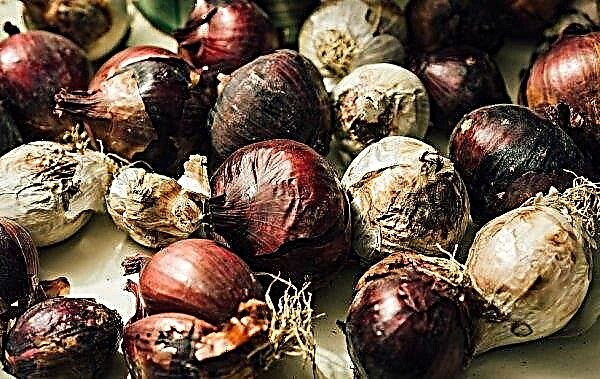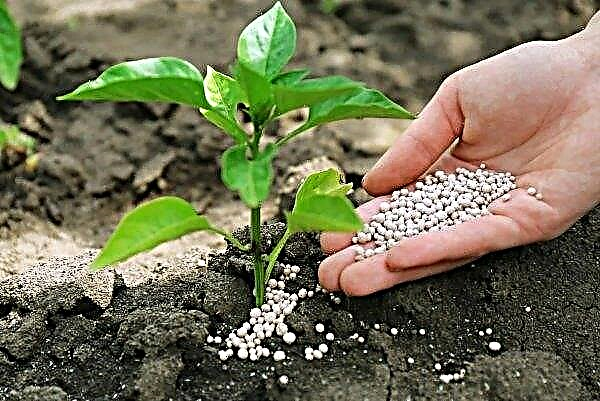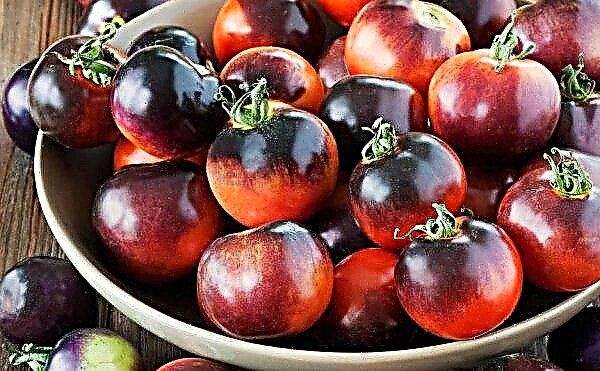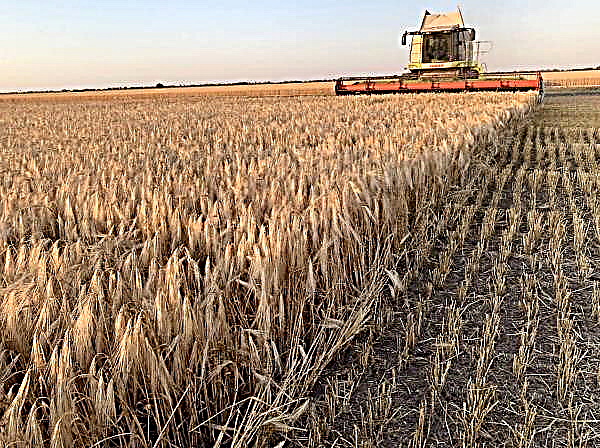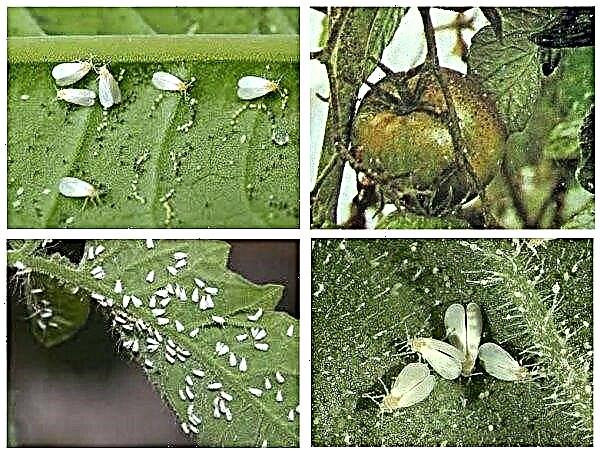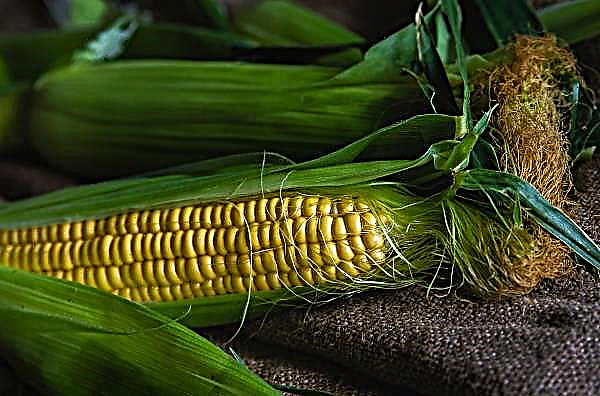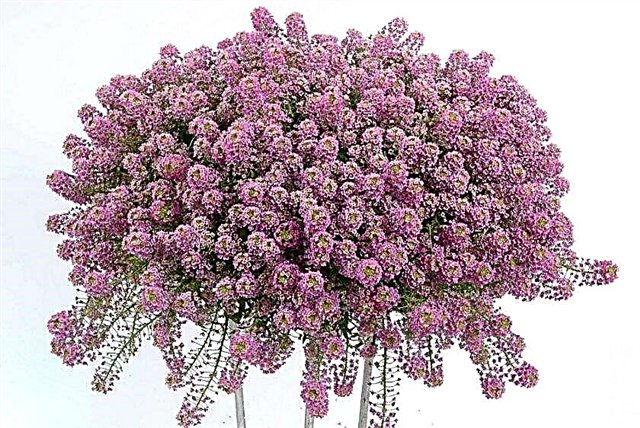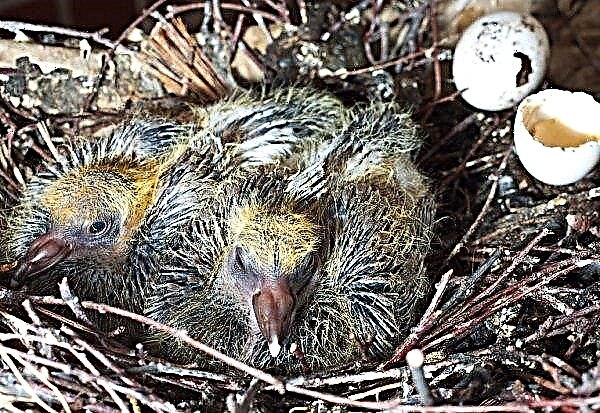Gemini bell pepper f1 is the result of Dutch selection. Its main advantages are increased yield and resistance to viral diseases characteristic of solanaceous. Highly appreciated by farmers for their attractive exterior qualities. Ripening fruits have the same shape, color and size, which makes it possible to successfully use the variety for commercial activities.
Grade description
Characteristic features of the variety:
- the variety belongs to early ripening hybrids - fruits can be harvested 75–82 days after sowing seeds;
- compact bushes with a spreading crown, reach a height of 60 cm;
- dense large foliage has a wrinkled structure, painted in dark green color (the structure of the leaves and their number provides reliable protection of the fruits from the scorching sun);
- friendly ripening;
- cuboid-elongated fruits in a state of technical maturity are painted green, biological - canary yellow;
- thick-walled fruits (wall thickness - 80 mm) are divided inside into 4 chambers containing a large number of seeds;
- each plant forms 5-7 fruits of the same shape and size, which tolerate transportation well and are stored for a long time;
- peppers are about the same length and width - 18 cm;
- the weight of the fetus depends on the method of cultivation: 230 g - in open ground, 330 g - in closed;
- sweet pepper flesh with a slight bitterness, covered with a thin skin;
- the variety is highly resistant to viral diseases, drought (fruits rarely get burns) and temperature extremes;
- the variety is universal in terms of use and cultivation;
- productivity is 350 c / ha.
Advantages and disadvantages
- The advantages of cultivating bell pepper Gemini f1:
- early ripening;
- attractive external and excellent taste indices;
- good transportability and durability;
- compact bushes;
- high productivity;
- unpretentiousness in terms of climatic conditions;
- resistance to the main diseases characteristic of bell pepper.

- Disadvantages of cultivation of vegetable crops:
- long-term staining of the fruit;
- dependence of yield on the intensity of top dressing;
- fragility of shoots.
Growing seedlings at home
The variety of pepper Gemini f1 propagated by the seedling method. Properly organized work with seed is the main factor that determines high productivity.
Important! Seeds need to be changed annually, since the collected seed from hybrids of the first generation does not store genetic information in the second generation and mutates when sown.
Optimum timing for sowing
The timing of sowing seeds depends on the climatic conditions of the growing region:
- for the northern and middle lane - from March 15;
- for the south and southeast - from February 15.
The soil
For seedlings, you need light soil, well permeable to moisture. It can be mixed independently, combining humus, garden soil and sand in equal proportions. For disinfection, the earth mixture is shed with 1% manganese solution.

At the site, the soil is prepared immediately after harvesting in the fall. It is better to choose a site where garlic or legumes grew before. Dig the soil to a depth of 20 cm, pour the solution with copper sulfate solution, after 5 days add 10 kg of humus to each m² and dig it again. In the spring, all manipulations are repeated a week before planting.
Capacity
When growing seedlings of pepper, it is better to give preference to individual containers, rather than general boxes. Pepper does not tolerate picking, so the best option is peat pots or tablets. Growing in such containers allows you to completely abandon picking and transplant plants into open ground directly in them, without injuring the roots.
Did you know? Sweet pepper is 5 times higher than lemons in the content of ascorbic acid.
Seed preparation
Seeds need to be purchased only in specialized stores. Before sowing, they are not treated with anything, but sown in the soil dry.
Sowing seeds
Seeds are sown one at a time, having previously made a 1 cm deep hole in the soil. From above, the seed is simply covered with soil and lightly sprayed with warm water from the spray gun. Then the container is covered with polyethylene and placed in a dark place for 10 days.
Seedling Care
During the first 10 days, before emergence, the temperature in the room with seedlings should be maintained within +25 ... + 30 ℃, humidity - 50%. In the afternoon, the film is removed for 1-2 hours to ventilate the soil and moisturize as necessary.

With the advent of sprouts, the shelter is completely removed. The containers are exposed in well-lit rooms and extend daylight hours for seedlings up to 12 hours by artificial means. The temperature for a week is reduced to +18 ℃ during the day and +16 ℃ at night. After 7 days, the temperature is increased to +20 ... + 25 ℃.
Watering is carried out after drying of the topsoil by irrigation. With the advent of 2 sheets, seedlings begin to be fed with complex fertilizers for pepper every 2 weeks according to the instructions or mixed in 10 liters of water:
- 0.5 g of ammonium nitrate;
- 3 g of superphosphate;
- 1 g of potassium.
Early ripening varieties of pepper also include:
With self-mixing of mineral compounds, subsequent feeding is carried out with doubled dosage.
Seedling hardening
10-14 days before transplanting into open ground, seedlings begin to harden. Plants are gradually transferred to a temperature regime corresponding to the subsequent habitat. They do this by transferring seedlings to a glazed balcony or loggia.
First, the plants are left there for 2-3 hours, gradually increasing the time interval to 24 hours. Then they begin to open the windows, also gradually increasing the time the plants stay in the fresh air.

Planting seedlings in a permanent place
A transplant into the open ground is carried out when the plants form 5 full leaf plates, aged 40-50 days. At the time of a dive, the soil should be warmed up to +13 ℃, and the average daily temperature should vary between +18 ... + 20 ℃.
The planting pattern of pepper is 40 × 60 × 80 cm or 30 × 40 × 50 cm. Before planting, the soil is thoroughly loosened to a depth of 15 cm, leveled and marked out for holes. Planting pits are partially filled with humus mixed with soil 1: 1, watered and transferred plants, trying not to damage the roots. At the end of all the manipulations, they add 500 ml of water to the wells and mulch them with compost mixed with peat in a 2: 1 ratio.
Important! When growing in the northern latitudes and the middle lane, seedlings after transplanting into the open ground should be covered with cut plastic containers. They are removed with the establishment of stable warm weather without sudden changes in temperature.
Outdoor Care
The productivity of the Gemini f1 variety can be increased with the help of simple agricultural techniques. The main attention when growing varieties should be paid to the quality and quantity of fertilizing, given the stage of development of plants.
Watering
To moisten the soil, drip irrigation can be organized by installing a tape system that runs throughout the site. Manual irrigation under the root is allowed. The main task of the plant grower is to ensure that the soil does not crack and the roots of the plants are not exposed.

Fertilizer application
Throughout the entire period of plant development from the moment of transplantation into open ground, a hybrid fed with mineral fertilizers containing:
- phosphorus;
- potassium.
Fertilizing is carried out at least 3 times:
- 7-10 days after the dive;
- in the flowering phase;
- at the beginning of the transition of fruits from the technical phase of maturity to the biological.
Tillage
After each watering, loosening and removal of weeds is carried out. Then the soil is mulched with compost to preserve moisture and cover the roots.
Important! ABOUTThis variety is not needed for bunching, as the plants do not form additional roots. This procedure will prevent the flow of oxygen to the rhizome, which will lead to its decay.
Shaping and tying bushes
Gemini pepper bushes f1 form into 1 stalk, removing all stepsons forming in the axils of the leaves. Pinch them by hand upon reaching a length of up to 5 cm. When the first central bud is formed, it is also removed. This procedure avoids the shredding of fruits.

The branches begin to be tied up at the moment of pouring the fruits, substituting supports and fixing under them. You can use ready-made cylindrical frames that are worn on plants immediately after a dive.
Harvesting and storage
Harvesting is possible upon reaching technical or biological maturity. In the first case, harvesting is carried out at the end of July, in the second - you need to wait until the fruits get a uniform bright yellow hue. The crops are stored in wooden boxes lined with sawdust at a temperature of +7 ... + 12 ℃. In this state, the fruits that have reached technical maturity retain their qualities for 2 months, biological - 1 month.

Peppers of this variety can be frozen in fresh form, cut into strips and laid out portionwise in packets. In this condition, the product is suitable for use for 6-12 months. Peppers of this variety can be used for stuffing, cooked lecho from it or canned in oil.
Did you know? The homeland of bell pepper is not Bulgaria, but South America. Local Indians used this product instead of salt. This is mentioned by the doctor Columbus in his records from 1494.
Gemini f1 pepper is demanding in care. The yield declared by the manufacturer can vary greatly in practice if agricultural practices are not followed.

